1.8: The Inka – Early 15th Century to 1581 CE
- Page ID
- 120729
Introduction
The Inka, based in the Andes mountains of South America, was the other great civilization of the pre-Columbian era. The term Inka referred to the ruling class or ruling family in their indigenous language, Quechua. The great Inka Empire extended along the lines of the Andean Mountains from Quito, Ecuador, to the northern part of Chile; the capital city was Cusco was the artistic capital of Peru to this day. Led by Spaniard Francisco Pizarro, Spanish explorers entered the Cusco Valley from 1520-1531, situated in the Andes Mountains, the second-highest mountain range after the Himalayas. Encountering inhospitable terrain, it took the Spanish 50 years to gain control of the Inka Empire, the area not secured until 1581, a conquest never as thorough as elsewhere in Latin America. The center of the Inka Empire sits between the driest desert in the world to the west and the Amazon to the east, in-between volcanoes, and is subject to numerous earthquakes. For the Spanish on horseback and in metal armor, the terrain was quite challenging to travel. Ultimately, a civil war between Inka rulers allowed the Spanish to capitalize and take control.
Most of the Inka Empire was less than 100-years old at the time of the Spanish Conquest. The Inka capital controlled twelve million subjects and was considered one of the world's largest empires at this time. The Inka were great engineers and built or rebuilt 14,000 miles of roads, from the coast to the two central regions north and south. They had a swift system of runners who traveled from the coast to the capital of Cusco in 3 days – up to 250 miles a day. When the terrain was steep, they erected stairs, and over rivers or valleys, they constructed textile bridges (1.8.1).
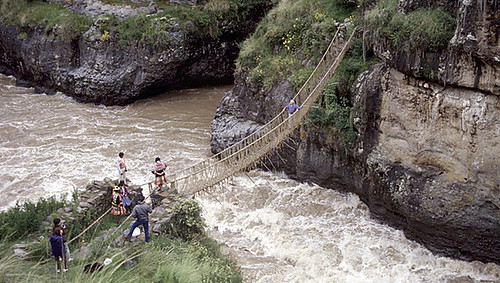
There were some similarities to the indigenous belief system of the Mesoamericans. For example, the Inka believed in the cyclical nature of agriculture, life, and death and participated in sacrifice. However, they focused their sacrifice mostly on llamas or Capacocha (Qhapaq hucha) sacrifice, the sacrifice of children. The remains of a 13-year-old LLullaillao maiden (1.8.2) was preserved by to the extreme cold in the high altitude of Volcán Llullaillaco in Argentina, where she was buried. The Inka, as most Mesoamericans, were polytheistic and worshipped nature gods, Inti the sun deity and Quilla the moon deity. However, the Inka had a close connection with stone and believed Viracocha, the creator and head of their pantheon of gods created humankind from stone. The first Inka ruler, Mano Capac, was thought to have been born out of stone and turned to stone at his death. The Inka's extraordinary passion for stone allowed them to be masters of ashlar masonry.
.jpg?revision=1)
Quipu and Textiles
The Mesoamerican civilizations had a writing system in codices or manuscripts. The Inka did not develop a writing system as we define a writing system, however, they use textiles to record historic events of their culture. They maintained rigorous control over their vast empire using a quipu. Quipus (1.8.3) is a sophisticated record-keeping system. The Quipucamayoc, or lord of knots, was the quipu reader to determine how much tribute and food, for example, was available in any storeroom throughout the empire. Quipus were made up of the main thread with multiple knotted threads hanging perpendicularly from the main thread. The color, position, kind of knot, and location recorded a variety of things. Although still not clearly understood today, the quipus demonstrated that Inka knew of the decimal system and were familiar with the concept of zero. The quipu was lightweight and portable for the Quipucamayoc to carry as they traveled over the rugged terrain of the empire. Interestingly, after the conquest of the Inka by the Spanish, it was noted converts to Christianity continued to use quipus to recount their sins in confession.

Since the Inka did not have a writing tradition, pre-conquest manuscripts are not available to study. However, Guaman Poma, an indigenous person who the Spanish Christianized, wrote a 1000-page letter to the King of Spain, illustrating the injustices occurring at the hands of the Spaniards. A reproduction of his letter and illustration depicts the Quipucamayoc (1.8.4). The letter, El primer Nueva Corónica y Buen Gobierno (The First New Chronicle and Good Government), chronicled Inka history by the indigenous Inka historian Felipe Guaman Poma de Ayala (ca. 1535–1616).
_p360.png?revision=1)
Textiles were a major form of art for the Inka, and they maintained strict control over their subjects and clothing. The Inka Unku or Tunic included topacu – small boxes with symbols to differentiate each group or unit to maintain control over the population. The symbols, patterns, and designs on garments were important symbolic messages indicating a person's ethnic identity and social rank (1.8.5). Even after the Spanish conquest, these tunics were created with indigenous symbols and Spanish symbols in the colonial period. (1.8.6).
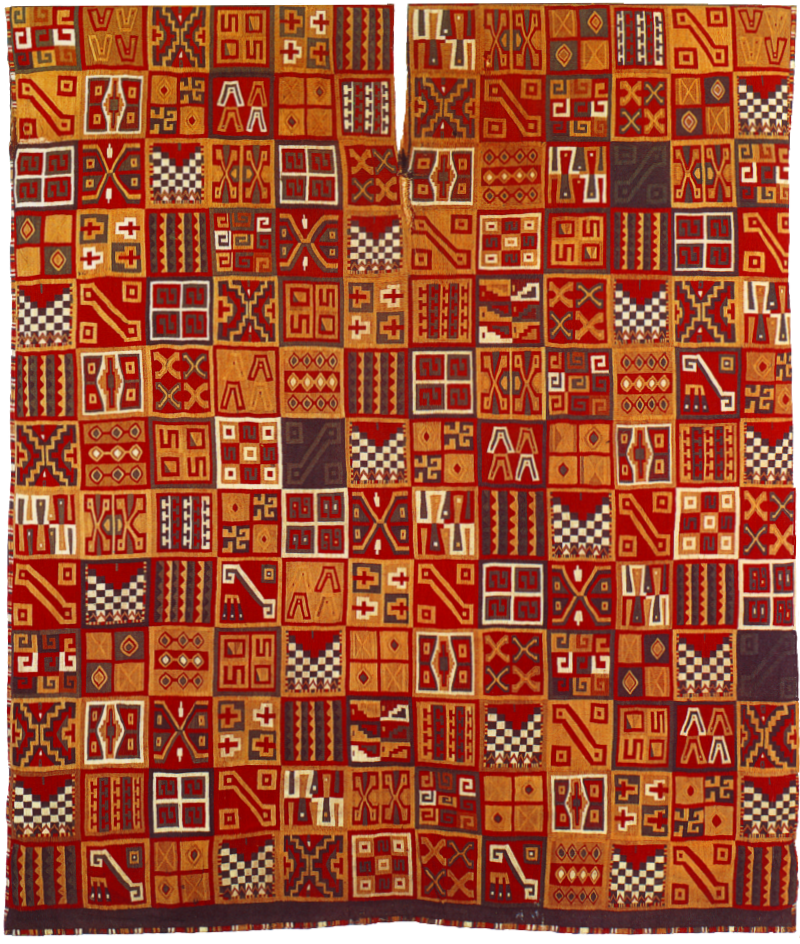
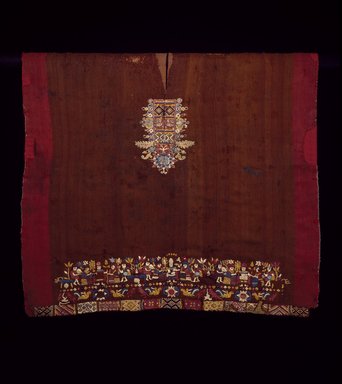
Figure \(\PageIndex{6}\): Unku Tunic (ca. 17th century. Camelid fiber, silk, metallic thread, 67.9 x 78.7 cm) CC BY-SA 3.0
Architecture
Because of Inka's unique passion and religious beliefs in stone became supreme masters of shaping and fitting stone. One of the most remarkable existing works of architecture today is Machu Picchu (1.8.7). Machu Picchu was a ritual center and royal fort; the out-of-the-way location went untouched by the Spanish, an area they never discovered in their conquest of South America. Hiram Bingham only discovered it in 1911. Their masterful use of shaping stone without mortar (ashlar masonry), as well as their superb handling of the rugged terrain with terraces on the steep slope of the mountain, is visible in the spectacular ruins.
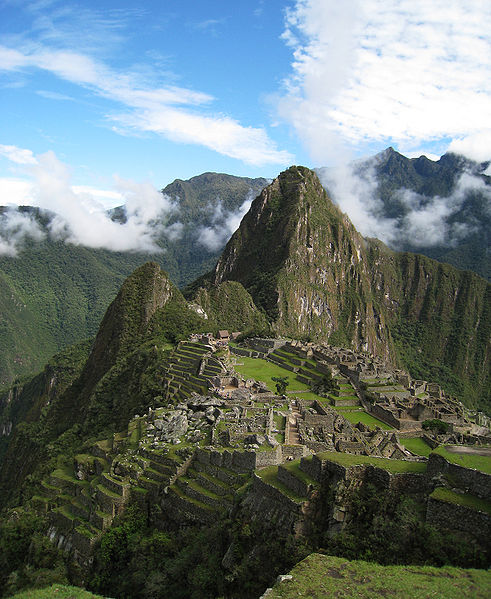
In the city of Cusco, the walls constructed by the Inka versus those built with European methods are definable. The Wall of the Golden Enclosure, a remnant of the Inkan Qorikancha Temple, was topped by a European church, Santo Domingo (1.8.8). The lower wall, made up of perfectly fitted stone with no mortar, is Inka. The brick church with mortar seen between the bricks is European. Because the Inka were masters of fitting stone blocks together without mortar, they perfectly placed laid courses of stone. When earthquakes occurred, a regular occurrence in the highlands, the Inka wall moved out of place and then adjusted back into place with the shifting earth. However, the European structure of Santo Domingo was not so lucky and required subsequent rebuilding and reconstruction from the original structure built after the conquest of the Inka. The Spanish church that tops the Inka Wall of the Golden enclosure is a visual symbol of the Spanish conquest of the Americas.
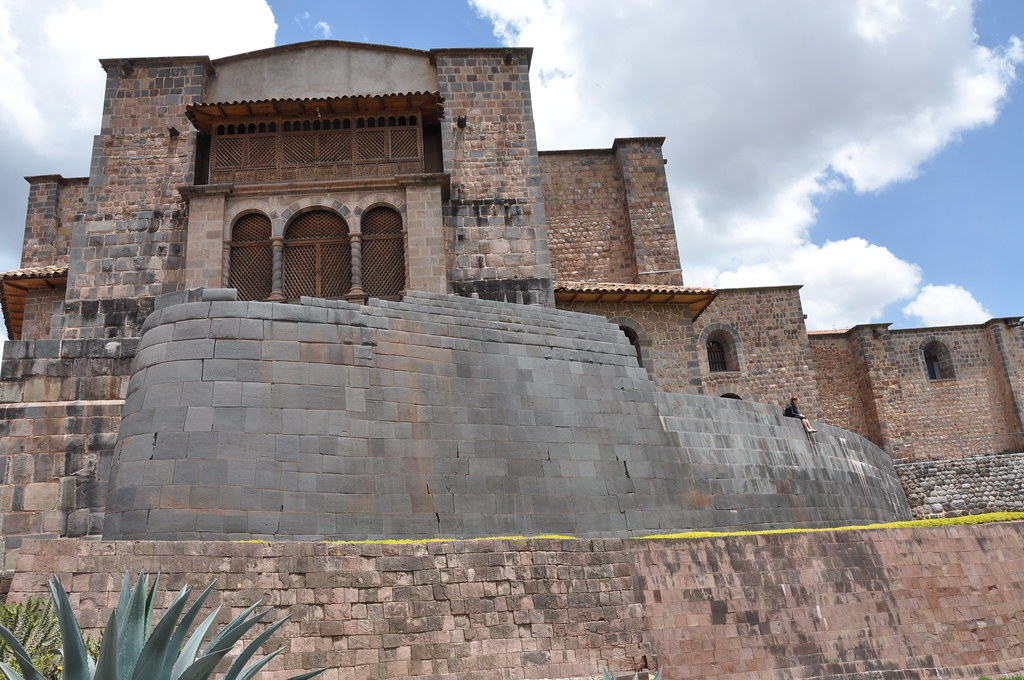
Gold
Historians believe the walls of Qorikancha were covered in sheets of gold. Similar to infamous statements made by Hernán Cortés in Mesoamerica about their desire for gold and according to the Inka chronicler Guaman Poma, the Spaniards in South America made the same comments. Guaman Poma asked a Spaniard, “Do you actually eat this gold?” And the Spaniard replies: 'Yes, we certainly do!' The last of the great Inkas, Manco himself, bitterly remarked, ‘Even if the snows of the Andes turned to gold still they would not be satisfied."[1] Sadly, much of the silver and gold of the Inka world was also sent back to Spain and melted down. A few remaining figurines depict small figures (1.8.9) and llamas (1.8.10).
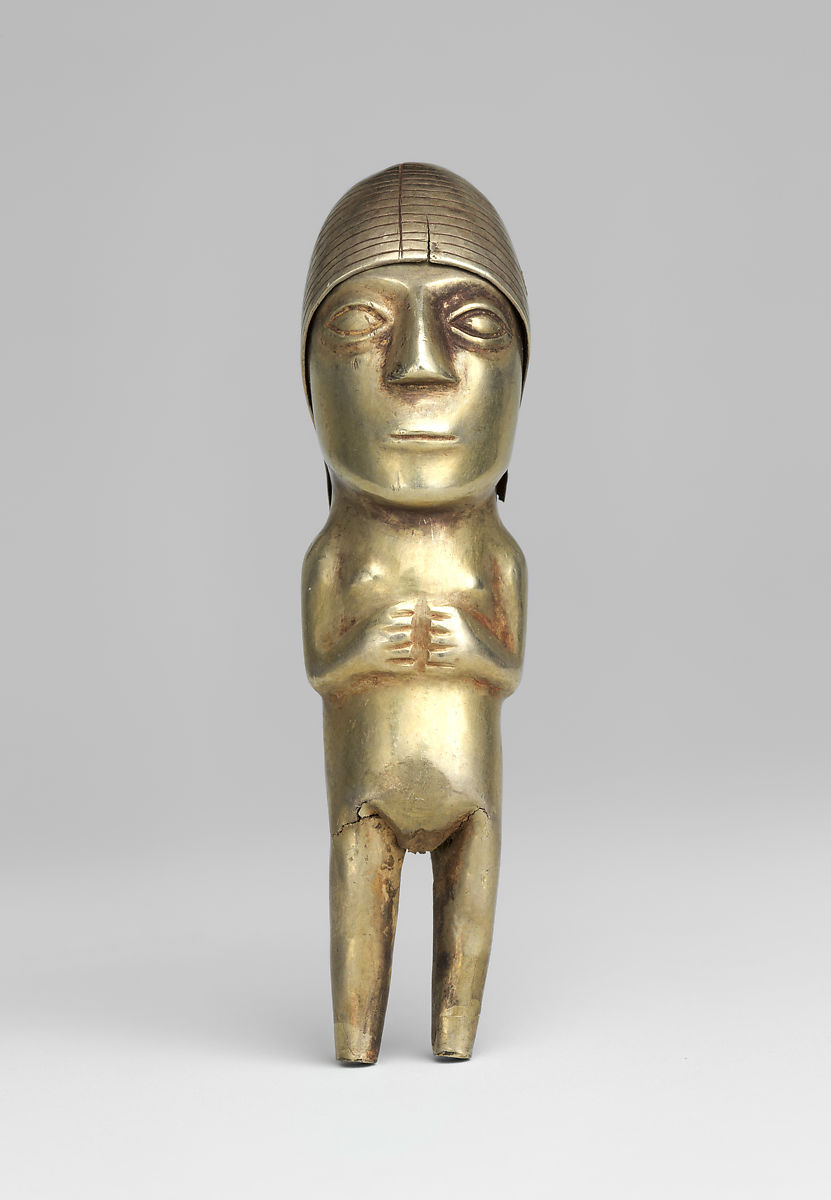
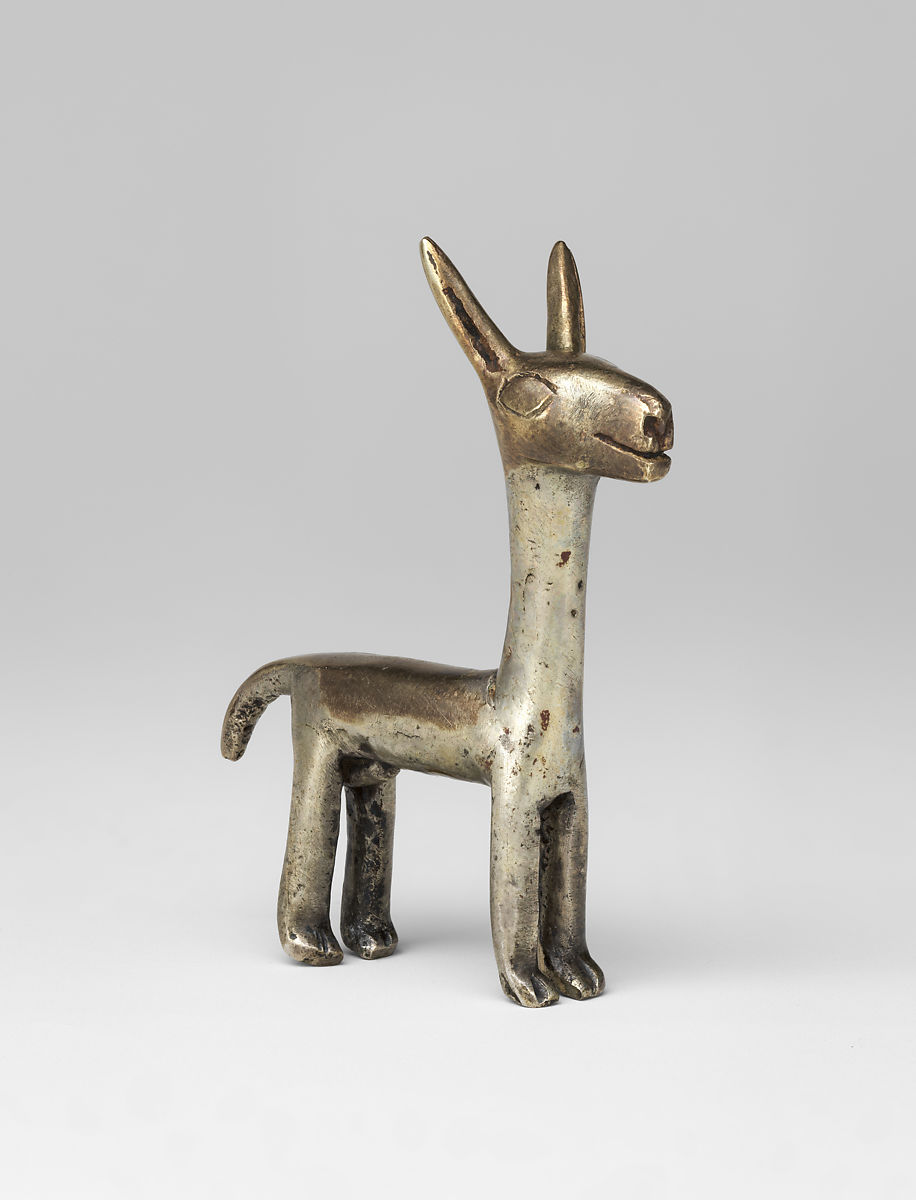
[1] Michael Wood, Conquistadors (London: BBC Digital, 2015).


